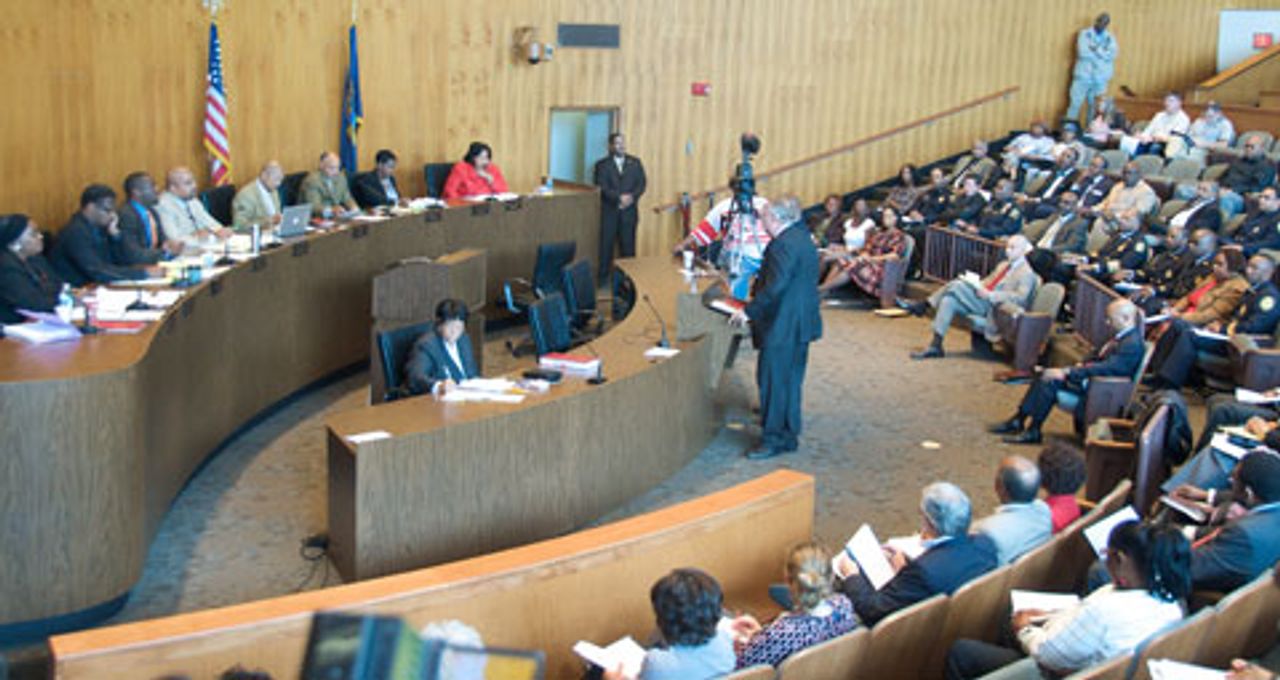 The hearing in Detroit City Council chambers
The hearing in Detroit City Council chambersOn Wednesday, October 6, irate Detroit residents attended a public hearing called by the Detroit City council to investigate the causes of the September 7 fires that ravaged whole neighborhoods in the city.
Like the inquiry called a week earlier by the state’s utility regulatory agency—the Michigan Public Services Commission (MPSC)—the event was aimed at concealing the responsibility of DTE Energy and city officials for the disaster.
Approximately 70 people attended the City Council hearing, including representatives from DTE, the Detroit fire and police departments, the mayor’s office and other government agencies. Only 20-30 ordinary citizens were present.
The Democratic-controlled City Council did everything to limit public participation. The mid-afternoon time selected for the event made it difficult for workers to attend and tight reins were kept on those who did. Well over two hours passed before residents were allowed to speak and by then most of the news media had packed their bags. While officials were given virtually unlimited time, residents were allowed only one minute for their comments, with a 30-second warning issued, in some cases, shortly after a speaker completed stating their name. When they had a chance to speak residents challenged and opposed the claims of officials from DTE and the Bing administration.
For their own political reasons several members of the City Council want to distance themselves from Mayor Bing, who is widely seen as a mouthpiece for DTE Energy, particularly after characterizing the fires as a “natural disaster.” Bing is a close associate of the utility’s outgoing CEO, Anthony Earley Jr., and sat on the energy giant’s board of directors for 20 years, from 1985-2005.
An estimated 750 power lines on DTE’s poorly maintained electrical infrastructure collapsed on September 7. DTE also ignored calls from neighbors complaining of dangerous power equipment days before. The live wires came down on houses and garages, sparking fires in nearly every part of the city. The wind gusts fanned the fires, driving them from house-to-house and, in some cases, across whole blocks.
The fire department, hampered by years of devastating budget cuts by Bing and previous administrations, was overwhelmed and took up to three hours in some cases to respond. Many firefighters, including first responders, were busy “sitting” on downed wires until DTE employees arrived to secure them. Moreover, due to budget cuts 8-12 of the city’s 66 fire stations are “decommissioned” each day.
The fires destroyed 85 houses and garages. The fact that no one was killed is due entirely to the rapid action of neighbors who got elderly residents and others out of their homes before they were engulfed in flames.
Certain aspects of the testimony by company and city officials were revealing. Deputy Mayor Saul Green was asked what the city had done to help those impacted by the fires. Despite Bing’s earlier statements that assistance would be given Green said he didn’t know the answer to the question but said people could call a city hotline for help.
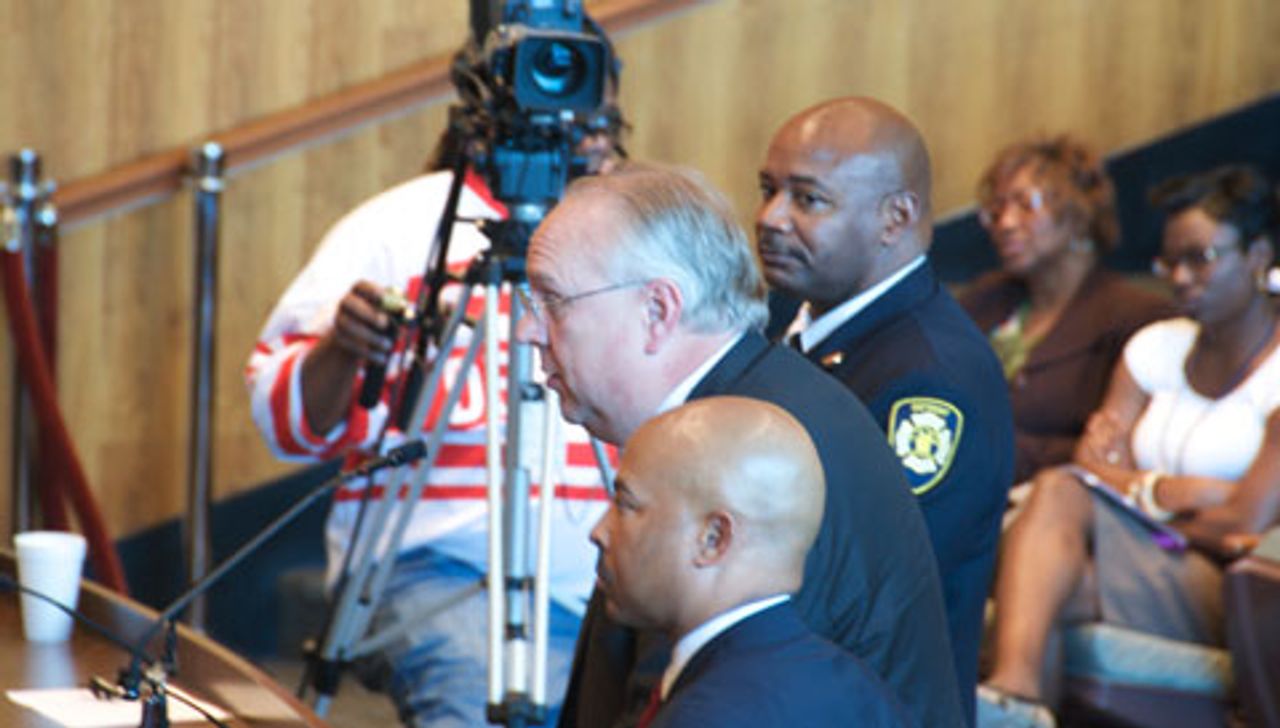 DTE president Kurmas, Police Commissioner Goodbee, Fire Commissioner Mack speak at the hearing
DTE president Kurmas, Police Commissioner Goodbee, Fire Commissioner Mack speak at the hearingA DTE official was asked if they had paid any claims or damages to fire victims. Steven Kurmas, the company’s president and chief operating officer, said nothing had been paid and claimed that no one had applied for assistance.
Fire officials said from 11am-5pm on September 7 the department received 58 calls about fallen power lines. It took more than two hours before DTE responded, tying up fire trucks, which could have responded to fires.
The city leveled most of the homes involved in the fire within 48 hours—a practice the city rarely if ever conducts on burnt out homes that remain standing for years. This makes it impossible for investigators to know the causes of the fires. Fire Commissioner James Mack said, “The houses are gone. If the investigators can’t get to the house [the cause of the fire] is undeterminable.”
The fire investigators and DTE have ruled the fires “accidental.” DTE had earlier, without any proof, claimed some of the fires were caused by “energy theft” and illegal hookups. At the hearing Kurmas admitted all of the wires burned in the fire making it impossible to determine the cause.
City Council spent a considerable amount of time on the subject of energy theft, one of the five topics they said they would investigate. DTE officials were pleased to discuss this issue to divert attention from their own responsibility. The company, with the support of the political establishment and the news media, has previously pointed to unauthorized energy hook-ups to conceal the deadly impact of its policy of disconnecting gas and electrical service to tens of thousands of poor households in the city.
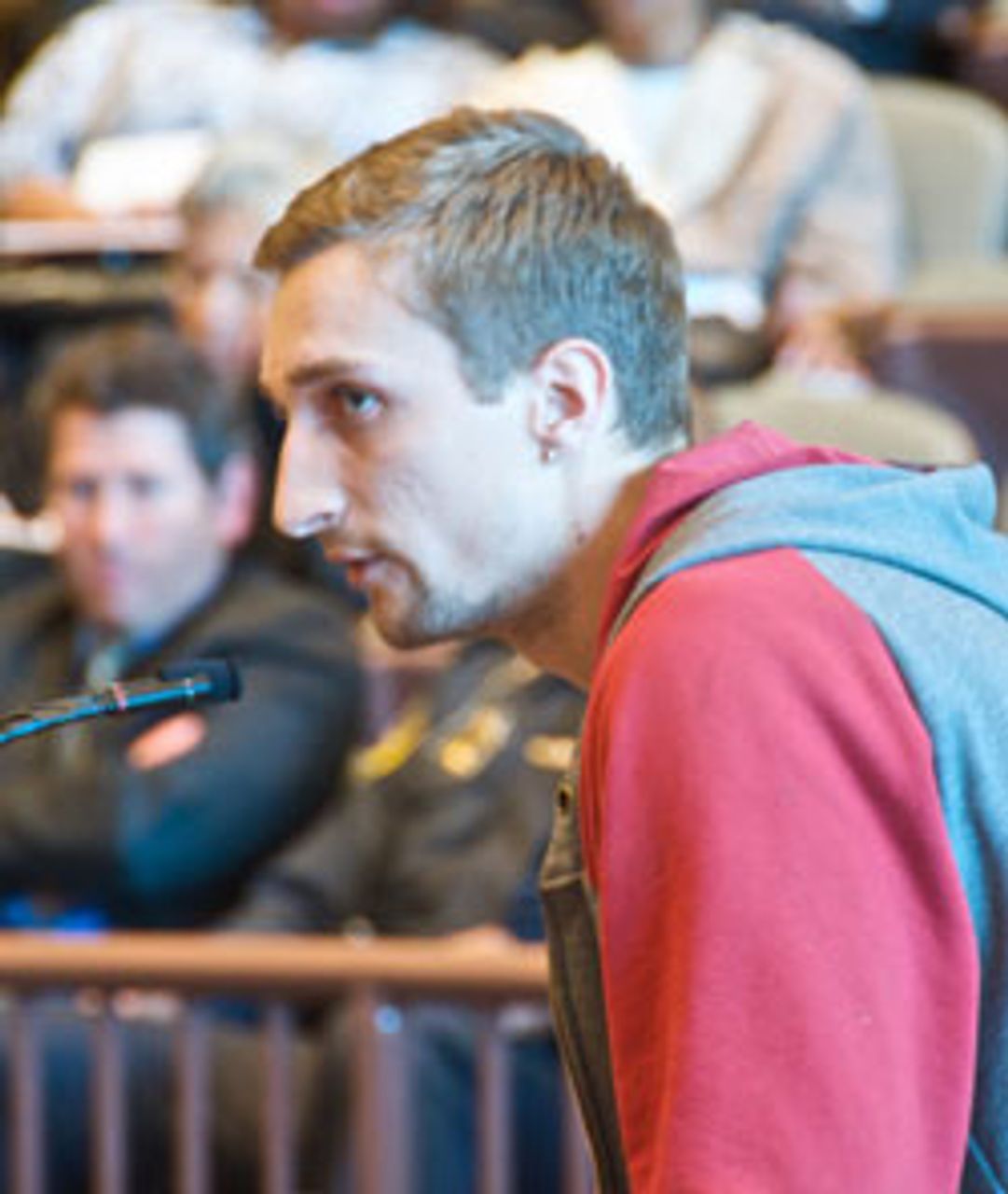 Ian Perrotta
Ian PerrottaIan Perrotta, a former firefighter who helped save residents on Moenart Street and video taped the fires, told the City Council he held DTE responsible for the disaster. “All the talk about illegal hookups is a red herring,” said Perrotta. “All those wires came down because of overgrowth on the lines. This is a company that had record profits. They should be able to do something about that.
“I also want to know why it took over an hour for the fire trucks to arrive?,” Perrotta asked. “We have been devastated. Why didn’t they call the Hamtramck Fire Department when they could have been there in 5 minutes?”
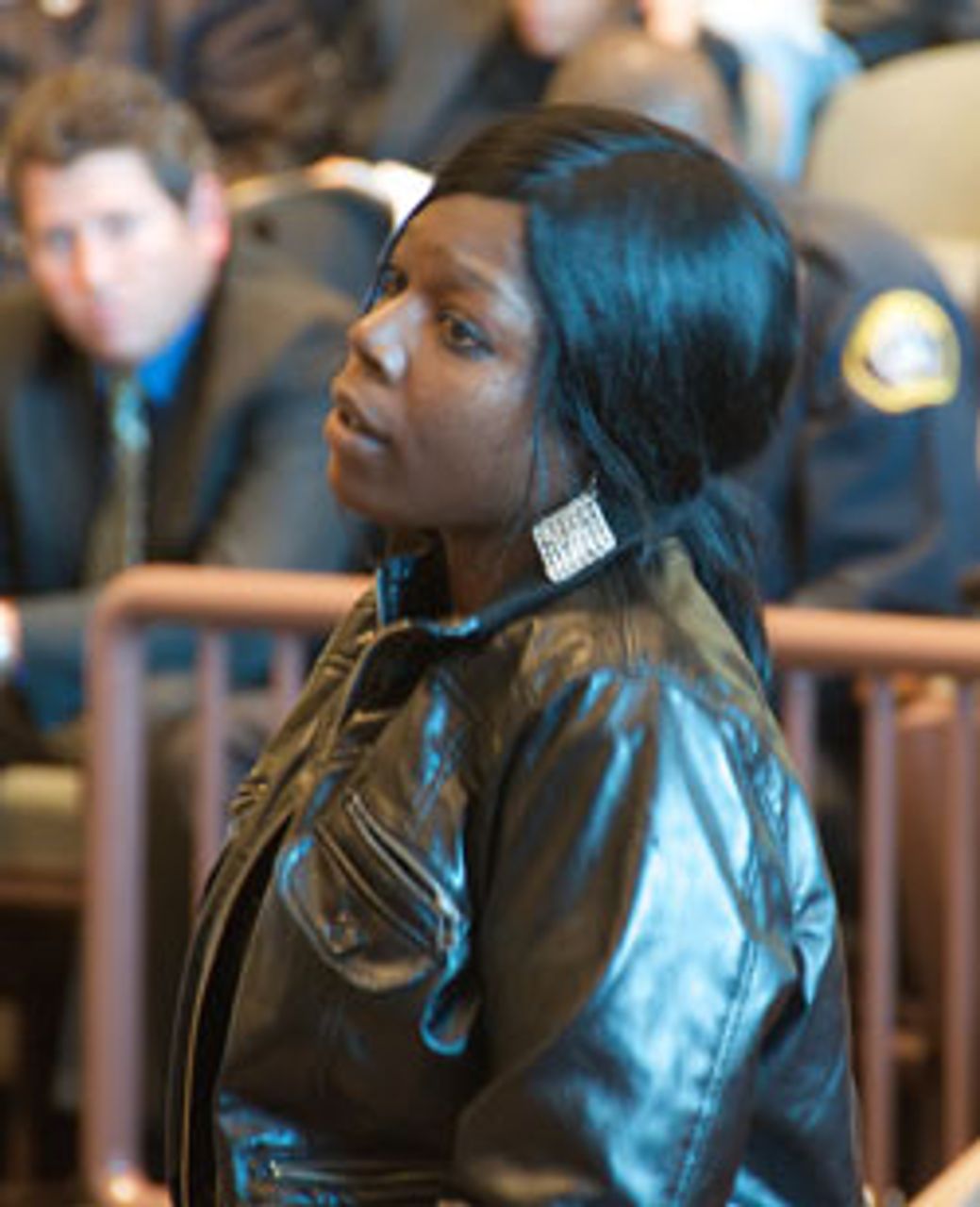 Keyana Jackson
Keyana JacksonKeyana Jackson, from Moenart Street, said she is still dealing with the destruction from the fire. “It moved so quickly. My house was damaged, but my neighbor’s house burned to the ground.
“They haven’t done anything for us,” said Jackson, who is still homeless. “And the next day they just came and wiped the rest of the houses away.”
James Holt, the former president of the La Salle Park Improvement Association, a neighborhood group, said faulty lines by DTE have been a long-standing problem. “The lines are faulty,” said Holt. The wires are old and need to be replaced. It doesn’t have to be a windy day, it could be any day that you could have a disaster in Detroit.”
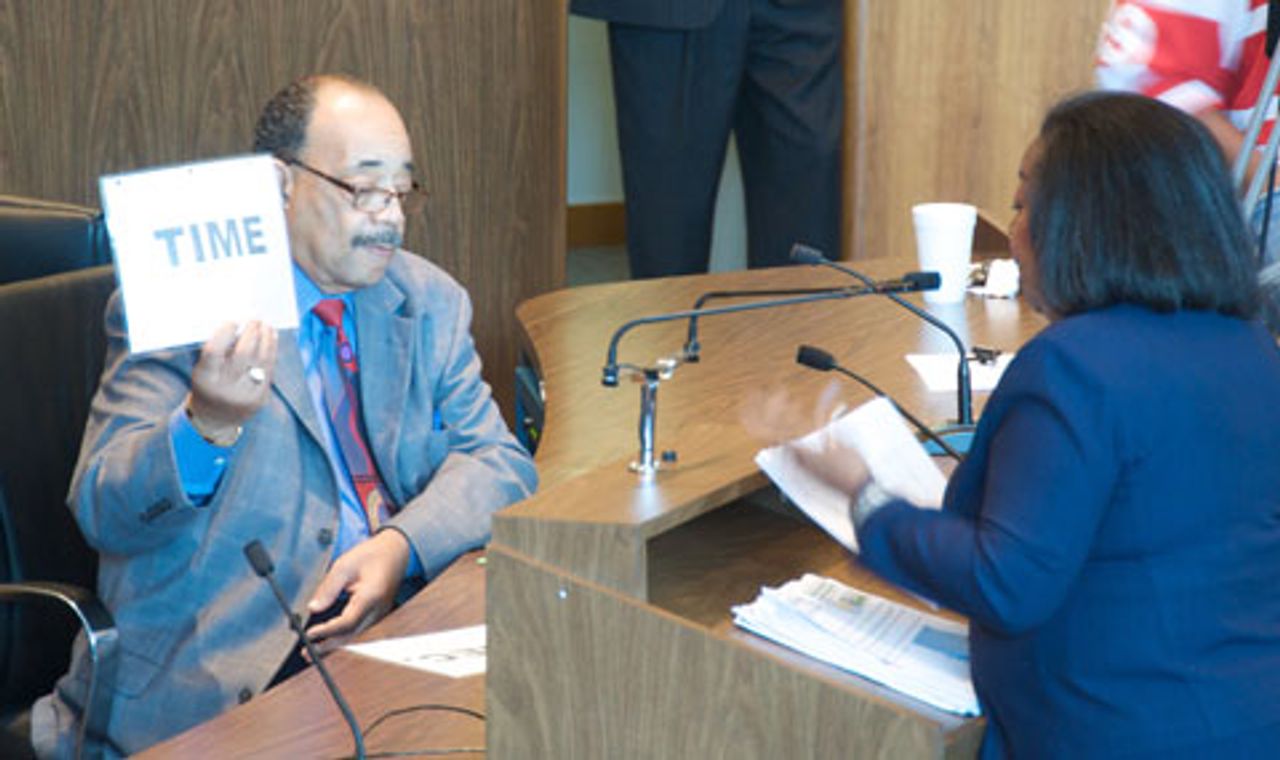 Edith Payne being notified her time is up
Edith Payne being notified her time is upEdith Payne brought with her a stack of documents to disprove DTE’s claims that it trims back tree limbs around wires. First, she pointed to Kurmas’ exaggeration that the winds were blowing at 70 mph when they were recorded to be 49 mph. Then she showed photo after photo of lines with overgrowth and cited Michigan Public Service Commission laws requiring they be cut back. Payne said she sent a letter to DTE explaining that 250,000 residents were in danger because of their policies, including on Stoepel street where a transformer exploded, burning several houses on the block.
Valeria McKinstry sought to clear up statements attributed to her by Councilwoman JoAnn Watson that illegal hookups were the main problem in her neighborhood. “People do illegal hookups because they don’t have the money” to afford service, said McKinstry. “People have to have the basics,” referring to lights, water and gas. “If they don’t they will steal. You would steal too if you had no other way to feed your babies. That’s basic human nature.”
Carl Williams, who at one point had his utilities shut off, asked the City Council what it planned to do against DTE. Williams said he thought the actions of DTE during the fires should be illegal. “Are you going to issue a complaint against DTE?” he demanded.
The purpose of the City Council hearing, like the MPSC event before it, is not to uncover the truth and hold those responsible accountable. It is a public relations ploy aimed at giving the appearance of an “investigation” which can only result in a whitewash. None of city or state politicians—who enjoy close political ties to DTE, and, in many cases, benefited from its campaign contributions—will do anything to challenge the interests of the energy giant.
